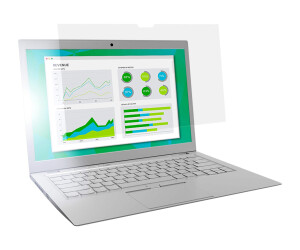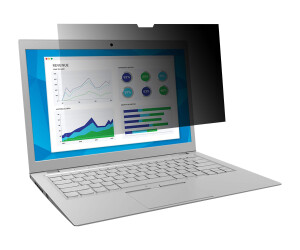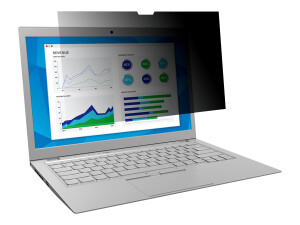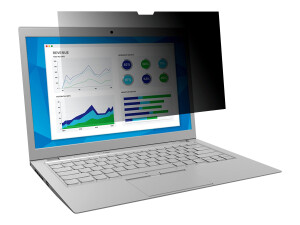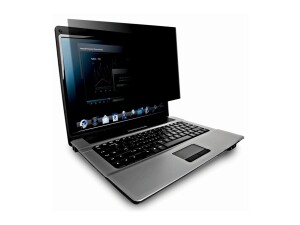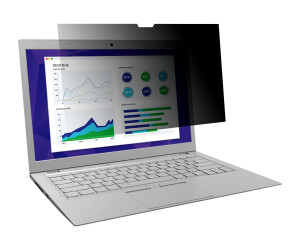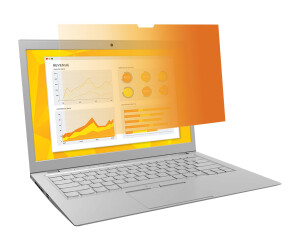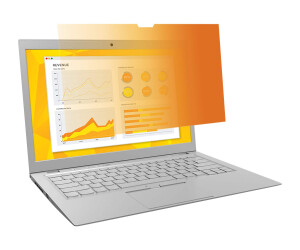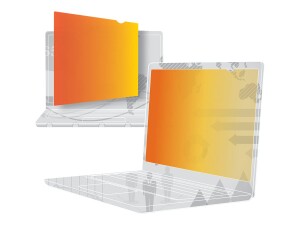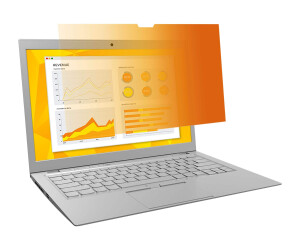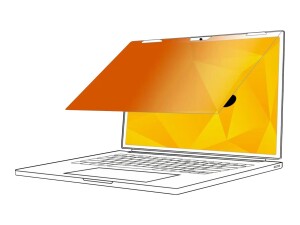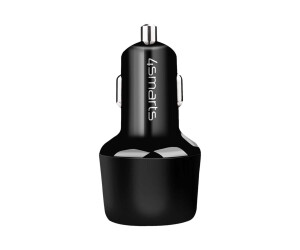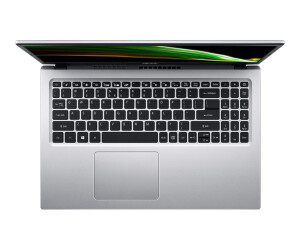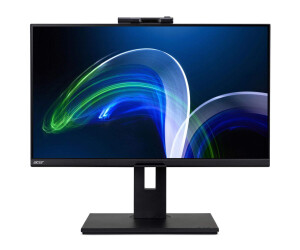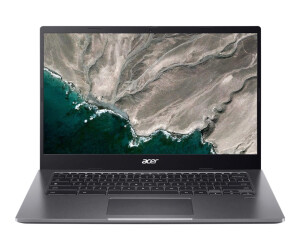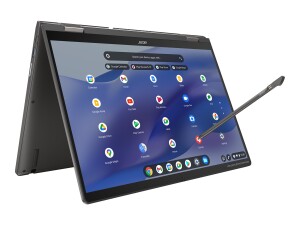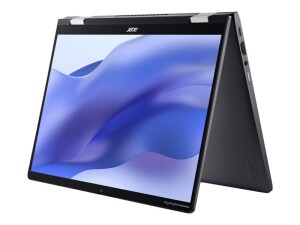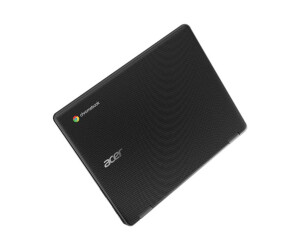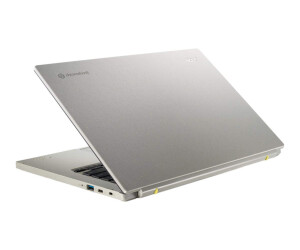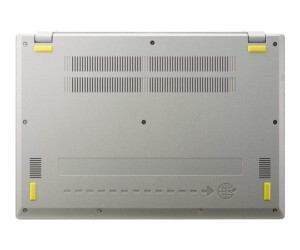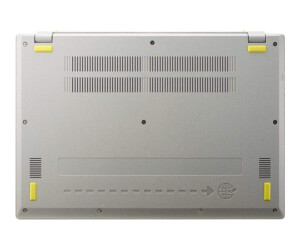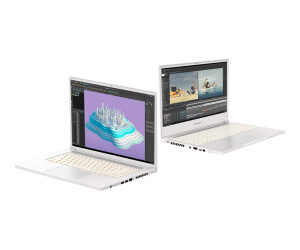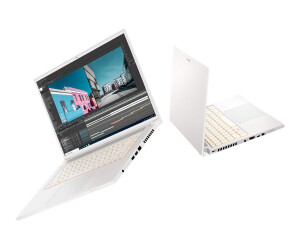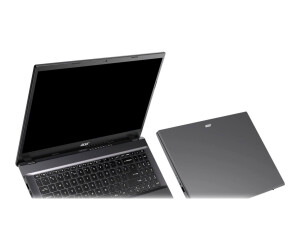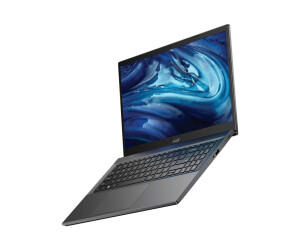Notebook
Notebook
A notebook, also known as a laptop, is a portable personal computer designed to support user mobility and flexibility. It is a versatile device that can be used in various environments, whether at home, in the office, at school, or on the go.
Design and Construction of Notebooks
Notebooks are available in various designs and sizes to meet individual user needs and preferences. Their construction is carefully designed to ensure an optimal combination of portability, performance, and user-friendliness.
1. Materials: The outer casing of notebooks is typically made of high-quality plastic or lightweight metal, ensuring a robust yet lightweight build. Premium materials not only contribute to durability but also give the notebook an appealing aesthetic.
2. Size and Weight: Notebooks come in different sizes and weight classes. From compact, lightweight models to larger, high-performance laptops, there is a wide range to choose from. This variety allows users to select a notebook that suits their specific requirements, whether for on-the-go or stationary use.
3. Portability: The design of notebooks is intended to ensure high portability. The slim profiles and ergonomic design make it easy to comfortably carry the notebook, whether in a bag, backpack, or a dedicated notebook sleeve.
4. Hinge Mechanism: The hinge mechanism is a crucial element in the design of notebooks. It allows for smooth opening and closing of the screen, which not only protects the screen but also provides easy access to the keyboard. The hinges are designed to be durable while providing sufficient stability.
5. Keyboard and Touchpad: The keyboard of a notebook is ergonomically designed to allow comfortable typing. The keys are usually arranged to ensure a natural hand posture while typing. The touchpad or trackpad provides an intuitive way to control the cursor without the need for an external mouse.
6. Ports and Expansion Options: Ports are strategically placed on the casing to facilitate easy connection to external devices. These include USB ports, HDMI ports, audio jacks, and more. Some notebooks also offer expansion options like SD card slots or additional drive bays.
Screen and Display of Notebooks
The screen of a notebook is undoubtedly one of the most crucial features, as it directly influences how the user interacts with the device and affects the visual experience. Here are detailed insights into the screen and display of notebooks:
1. Screen Size: The screen size of a notebook varies depending on the model and brand. It usually ranges between 10 and 17 inches. Users can choose the optimal size based on their specific requirements and preferences. Larger screens often provide more display area, while smaller models are lighter and more portable.
2. Resolution: Modern notebooks often use high-resolution displays that provide sharp images and clear text. Resolution is measured in pixels and determines how many pixels the screen can display. Common resolutions include Full HD (1920x1080), QHD (2560x1440), and 4K (3840x2160). Higher resolutions allow for more detailed representation.
3. Display Technology: Notebooks typically use either LED (Light Emitting Diode) or OLED (Organic Light Emitting Diode) displays. LED displays are widely used and offer good brightness and color reproduction. OLED displays are known for their impressive black levels and vibrant colors.
4. Brightness and Contrast: The brightness of a notebook screen is measured in nits (cd/m²). A higher value indicates a brighter display, which can be especially important outdoors. Contrast ratio indicates how well the screen can differentiate between bright and dark areas.
5. Color Accuracy and Gamut: For professional applications like graphic design and photo editing, color accuracy is crucial. Notebooks with a wide color gamut and good color accuracy provide a reliable display for demanding tasks.
6. Touchscreen Functionality (optional): Some notebooks feature touchscreen functionality, allowing the screen to be operated with fingers. This is particularly useful for certain applications and tablet modes.
7. Refresh Rate (for gaming notebooks): For gaming notebooks, refresh rate is an important factor. A higher refresh rate (measured in Hertz) enables smoother motion in games.
Keyboard and Trackpad of Notebooks
The keyboard and trackpad are essential input devices in notebooks that significantly contribute to the user experience. Here is detailed information about these components:
1. Keyboard: The keyboard of a notebook is specially designed to allow comfortable typing despite the compact build of the device. There are several key features:
Key Layout and Size: The keys are ergonomically arranged to allow natural typing. The layout varies depending on the manufacturer and model. The size of the keys is dimensioned for comfortable operation.
Key Travel and Feedback: Key travel refers to the distance a key travels when pressed. Adequate key travel provides a pleasant typing feel. The tactile feedback the keyboard provides when a key is pressed is also important for the typing experience.
Backlighting (optional): Many notebooks feature a keyboard with backlighting, which makes typing in low-light conditions easier and adds an aesthetic touch to the device.
Additional Keys: In addition to the main keys, notebooks have special function keys for tasks such as volume control, brightness adjustment, and more.
2. Trackpad: The trackpad is a touch-sensitive input device that serves as a substitute for a mouse. It allows control of the cursor and facilitates navigation on the screen. The following aspects are relevant:
Size and Position: The trackpad is typically located below the keyboard and varies in size depending on the notebook's design. A large trackpad allows for more precise control.
Multitouch Functionality: Modern trackpads offer multitouch support, meaning they can recognize gestures like zooming, scrolling, and swiping.
Button Integration (Clickable Trackpad): Some notebooks have a clickable trackpad, which means it has integrated mouse buttons. In other models, the buttons are separate elements.
Precision and Sensitivity: The precision and sensitivity of the trackpad influence the accuracy of mouse control.
Processor and Performance of Notebooks
The processor is the heart of a notebook and is primarily responsible for its performance. Below, I will explain in detail the processor and its impact on performance:
1. Types of Processors: Modern notebooks come equipped with various types of processors, including:
Intel Processors: Among the most popular are the Intel Core i3, i5, i7, and i9 series. They offer a wide range of performance options, from entry-level models to high-end processors for demanding tasks.
AMD Processors: AMD also offers a variety of processors, including Ryzen 3, 5, 7, and 9 models. They are known for their good value for money and performance capabilities.
2. Processor Performance: The performance of a processor is influenced by various factors:
Clock Speed: Clock speed indicates how many instructions a processor can execute per second. Higher clock speeds generally mean better performance.
Cores and Threads: Modern processors have multiple cores, allowing them to handle multiple tasks simultaneously. Threads enable a core to execute multiple tasks at the same time.
Processor Architecture: The architecture of the processor affects its efficiency and performance. Newer architectures tend to be more efficient.
3. Impact on Performance: The processor's performance directly affects how the notebook functions:
Everyday Tasks: A powerful processor enables smooth execution of everyday tasks like web browsing, email, word processing, and multimedia playback.
Multi-tasking: Multi-core processors allow running multiple applications simultaneously without compromising performance.
Resource-intensive Tasks: For tasks like video editing, 3D rendering, or demanding games, powerful processors are necessary to ensure smooth performance.
4. Graphics Processor (optional): Some notebooks come with separate Graphics Processors (GPU) alongside the main processor. These are specialized for graphics-intensive tasks such as gaming, video editing, and image processing.
The performance of a notebook depends on the processing unit. Modern notebooks use powerful processors capable of handling a wide range of tasks, from simple activities like web browsing to resource-intensive applications like graphic design or video editing.
Memory and Storage in Notebooks
Memory is a crucial element for the performance and functionality of a notebook. Below, I will provide detailed information on RAM (Random Access Memory) and storage media such as hard drives and SSDs:
1. RAM (Random Access Memory): RAM is a volatile memory used by a notebook to store running processes and applications. Here are some key aspects:
Capacity: Modern notebooks offer RAM capacities ranging from 4 GB up to 64 GB or more. More RAM allows for running more applications simultaneously and ensures smooth performance.
Speed (Clock Frequency): RAM modules have different clock frequencies measured in MHz. Higher clock frequencies mean faster data transfer rates.
DDR Generation: DDR (Double Data Rate) is a memory technology available in various generations, such as DDR3, DDR4, and DDR5. Each generation offers improvements in speed and efficiency.
2. Storage Media: Modern notebooks use various types of storage media, including Hard Disk Drives (HDDs) and Solid-State Drives (SSDs):
Hard Disk Drive (HDD): HDDs offer large storage capacities at comparatively lower costs. They are suitable for storing large files but have longer load times compared to SSDs.
Solid-State Drive (SSD): SSDs are faster and more efficient than HDDs. They have no moving parts, resulting in faster read and write speeds. SSDs enhance overall notebook performance and responsiveness.
3. Memory Expansion: Many modern notebooks offer the possibility to expand memory. This can be done by adding additional RAM modules or replacing the hard drive with a larger or faster SSD.
4. Impact on Performance
Multi-tasking: Sufficient RAM allows for using multiple applications simultaneously without compromising performance.
Fast Loading: SSDs enable quick startup of the operating system and applications as they require no warm-up time.
Data Transfer Speed: The speed of the memory influences the rate at which data is processed.
Operating System and Software in Notebooks:
The operating system and software installed on it are crucial for the functionality and purpose of a notebook. Below, I will provide detailed information on this topic:
1. Operating System:
Windows: Microsoft Windows is the most widely used operating system for notebooks. It offers a user-friendly interface and a wide range of applications. Different versions of Windows, such as Windows 10 and Windows 11, offer different features and user interfaces.
macOS: Developed exclusively for Apple devices, macOS is known for its user-friendliness, stability, and seamless integration with other Apple products and services.
Linux: Linux is an open-source operating system available in various distributions. It is known for its stability, security, and adaptability. Linux is often preferred by technically savvy users and developers.
2. Pre-installed Software:
Modern notebooks often come with a range of pre-installed applications covering basic functionality:
Office Applications: Programs like Microsoft Office (Word, Excel, PowerPoint) or comparable open-source alternatives are commonly pre-installed, allowing for document, spreadsheet, and presentation creation.
Web Browsers: Common browsers like Google Chrome, Mozilla Firefox, or Microsoft Edge are usually pre-installed to facilitate internet access.
Media Players: Programs for playing audio and video files are often included to cover entertainment needs.
3. Software Installation:
Users have the option to install additional software applications as needed. These can include:
Graphic and Video Editing Software: Programs like Adobe Photoshop, Premiere Pro, or comparable open-source alternatives allow for the editing of graphics and videos.
Games: Gaming platforms and games can be installed to transform the notebook into a gaming machine.
Specialized Software: Depending on the user's requirements, specialized applications for design, development, accounting, and more can be installed.
4. Updates and Security:
Regularly updating the operating system and software is important to ensure the security and performance of the notebook. Security software such as antivirus programs and firewalls are also crucial to protect the device from threats.
Most notebooks use Windows, macOS, or Linux as the operating system. These systems provide a user interface and grant access to a variety of software applications, from productivity programs to entertainment applications.
Connectivity and Ports in Notebooks:
Connectivity and various ports play a crucial role in the versatility and functionality of a notebook. Below, I will provide detailed information on this topic:
1. USB Ports:
Types and Quantity: Notebooks are equipped with various USB ports. These can be USB-A, USB-C, or a combination of both. The number of USB ports varies depending on the model and brand.
Functionality: USB ports are used to connect various external devices, such as external hard drives, USB sticks, printers, mouse, and keyboard.
2. HDMI and DisplayPort Ports:
Video Transmission: These ports allow the connection of the notebook to external screens, monitors, or televisions. They support the transmission of audio and video signals in high quality.
Multiple Displays: Modern notebooks often support multiple external screens simultaneously, expanding multitasking capabilities.
3. Audio Ports:
- Headphone and Microphone Ports: These ports allow the connection of headphones, external speakers, and microphones for audio recording and playback.
4. Wi-Fi and Bluetooth:
Wi-Fi (Wireless Local Area Network): Enables wireless connections to the internet and other networks. Modern notebooks support various Wi-Fi standards like 802.11ac or 802.11ax for fast wireless data transfer.
Bluetooth: Allows wireless connection to other Bluetooth-enabled devices like headsets, mice, keyboards, and more.
5. Ethernet Port:
- Wired Network Connection: An Ethernet port allows the connection of the notebook to a wired network for a stable and reliable internet connection.
6. Memory Card Reader:
- SD Card Reader: This port allows for direct reading of memory cards from cameras and other devices, facilitating file transfer.
7. Additional Ports:
- Depending on the model and brand, additional ports may be present, such as Thunderbolt ports, Ethernet ports, USB on-the-Go (OTG), and more.
Battery and Power Management in Notebooks
Battery life and power management are crucial aspects for the mobility and practical use of a notebook. Below, I will provide detailed information on this topic:
1. Battery Life:
Battery life varies depending on the model and usage pattern. Modern notebooks typically offer a battery life of 6 to 12 hours, depending on factors such as processor type, screen size and resolution, and the level of activity (e.g., web browsing vs. video editing).
It's important to note that actual battery life may vary based on individual usage conditions.
2. Types of Batteries:
- Notebooks typically use Lithium-Ion batteries, which offer high energy density and are lightweight. These batteries are rechargeable and have a long lifespan.
3. Power Management Systems:
Modern notebooks are equipped with advanced power management systems. These systems monitor and control the notebook's power consumption to maximize battery life.
They regulate screen brightness, control processor performance, and put background processes into power-saving mode when not needed.
4. Power Saving Modes:
- Notebooks offer various power-saving modes such as standby, hibernate, and power saver mode. These modes reduce energy consumption when the notebook is not actively in use.
5. Fast Charging Features:
- Some notebooks have fast charging features, allowing the battery to be charged quickly. This is particularly useful for users who are frequently on the go.
6. Battery Care and Maintenance:
- It is advisable to follow the manufacturer's guidelines for battery care to extend its lifespan. This includes measures such as avoiding deep discharge and storing at the correct temperature.
7. Replaceable vs. Built-in Batteries:
- Some notebooks have built-in batteries that cannot be replaced by the user, while others have replaceable batteries. The latter provides the option to change the battery when needed.
Additional Features in Notebooks
Modern notebooks offer a variety of additional features that enhance the user experience and expand functionality. The following features are described in detail:
1. Integrated Webcam:
Many notebooks are equipped with an integrated webcam, allowing the user to make video calls, conduct video conferences, and capture photos or videos without the need for additional accessories.
The webcam's resolution varies by model and can go up to Full HD, enabling high-quality video communication.
2. Fingerprint Scanner:
A fingerprint scanner provides an additional level of security for the notebook. Instead of entering a password, the user can authenticate themselves using their fingerprint.
This feature is particularly useful for protecting sensitive data and accessing secure applications.
3. Backlit Keyboards:
Notebooks with backlit keyboards allow for comfortable use even in low light conditions, such as in dark rooms or at night.
The brightness and color of the backlighting can often be adjusted to meet the user's personal preferences.
4. Touchscreen Function:
- Some notebooks feature a touchscreen, making device operation more intuitive. This is particularly convenient for using apps and navigating the operating system.
5. Stylus Support:
- Stylus support allows the user to write or draw on the screen with a digital pen. This is ideal for creative applications like graphic design or digital note-taking.
6. Special Function Keys:
- Many notebooks have special function keys that allow the user to quickly perform specific actions, such as volume control, activating flight mode, or opening certain applications.
7. Connectivity Options:
- Additional features may also include advanced connectivity options, such as Thunderbolt ports, SD card readers, HDMI or DisplayPort outputs, and more.
Graphics and Multimedia in Notebooks:
The graphics capabilities of a notebook play a crucial role in handling tasks that require high graphic performance. Here are the various aspects of graphics and multimedia in notebooks described in detail:
1. Integrated vs. Dedicated Graphics:
Some notebooks use integrated graphics solutions that are integrated into the main processor. These are suitable for everyday tasks like web browsing, word processing, and video playback.
Dedicated graphics processors (GPU), on the other hand, are more powerful and specialized in processing complex graphics tasks. They are particularly important for graphics-intensive applications like gaming, 3D modeling, and video editing.
2. Graphics Memory (VRAM):
- Dedicated GPUs have their own graphics memory, independent of the system's RAM. The more VRAM a GPU has, the better it can handle high-resolution textures and complex models.
3. DirectX and OpenGL Support:
- Modern graphics processors support the latest versions of graphic APIs like DirectX and OpenGL. These APIs are crucial for running games and applications that utilize advanced graphic effects.
4. Resolution and Refresh Rate:
- The notebook's screen determines the maximum supported resolution and refresh rate. Higher resolution provides sharper images, while a higher refresh rate allows for smoother gameplay.
5. Supported Outputs:
- Notebooks have various output options to connect external monitors or projectors. These include HDMI, DisplayPort, and USB-C with Display support.
6. Audio Support:
- Modern notebooks provide high-quality sound with support for surround sound formats. Some models even feature special audio technologies for enhanced sound quality.
7. Multimedia Features:
- Notebooks are often equipped with built-in speakers, microphones, and webcams to support multimedia applications such as video calls and movie playback.
8. Graphics Drivers and Optimizations:
- Regular updates to graphics drivers are important to maintain performance and compatibility with new applications and games. Manufacturers often offer special optimizations for popular games.
Special Features and Extensions in Notebooks:
Modern notebooks offer a variety of special features and extensions that enhance the user experience and expand functionality. Here are some of the key features described in detail:
1. Touchscreen and Pen Input:
Some notebooks feature a touchscreen that allows the user to directly tap, draw, or navigate on the screen. This is particularly useful for creative applications, note-taking, and using touch-based apps.
Pen input features further extend these capabilities by enabling precise drawing and writing. The included pen responds to pressure and tilt to provide a natural writing experience.
2. 2-in-1 Designs (Convertible or Detachable):
- These notebooks can be converted into different modes to increase flexibility. Convertible models can transform from a laptop into a tablet by rotating the screen 360 degrees. Detachable models have a removable screen that can be used as a standalone tablet.
3. Gaming-Specific Features:
- Gaming notebooks offer special features like backlit keyboards with customizable color options, macro keys for complex gaming commands, and advanced cooling systems to maintain performance during long gaming sessions.
4. Security Features:
- Some notebooks have additional security features such as fingerprint scanners, facial recognition, or Trusted Platform Modules (TPM) for secure storage of sensitive data.
5. Voice Control and Virtual Assistants:
- Modern notebooks often integrate voice control technologies like Microsoft's Cortana or Apple's Siri to facilitate interaction with the device.
6. Special Keys and Quick Access:
- Some notebooks have special keys or functions that make it easier to access specific applications or settings, such as a dedicated volume control key.
7. Advanced Cooling Systems:
- For performance-intensive applications and games, some notebooks have advanced cooling systems that ensure the device's temperature remains stable and doesn't impact performance.
8. Special Software Packages:
- Some manufacturers offer special software packages tailored to the specific needs of users, such as creative applications for graphic designers or specialized tools for business users.
Security and Privacy in Notebooks:
In today's digital world, security and privacy are of utmost importance. Modern notebooks offer a variety of features to ensure the security of sensitive information. Here are some of the key security and privacy features described in detail:
1. Biometric Authentication:
- Many notebooks are equipped with a fingerprint scanner that allows the user to authenticate themselves by uniquely identifying their fingerprint. This ensures that only authorized individuals have access to the device.
2. Facial Recognition:
- Some notebooks feature advanced cameras and software for facial recognition. This technology scans the user's facial features to confirm identity and grant access.
3. Encryption Technologies:
- Modern notebooks utilize advanced encryption technologies to protect the data stored on the device. This means that even if the device is lost or stolen, the data remains unreadable to unauthorized individuals.
4. Security Chips and Trusted Platform Modules (TPM):
- Some notebooks are equipped with special security chips or TPMs. These chips provide a secure environment for storing cryptographic keys and other sensitive information to protect them from unauthorized access.
5. Privacy Filters and Visual Protection Technologies:
- Some notebooks offer integrated privacy filters that restrict the screen's viewing angle to prevent visual harassment. There are also visual protection technologies that ensure the screen is only visible from a specific angle.
6. Secure Boot and Secure Boot Environments:
- These technologies ensure that only verified and signed operating systems and applications are executed when the notebook starts up. This prevents malicious software from compromising the system.
- Notebooks often provide the capability to set up Virtual Private Networks (VPN) and firewalls to ensure a secure internet connection and protection against unauthorized access from the network.
8. Regular Security Updates:
- Manufacturers regularly provide security updates and patches to address known security vulnerabilities and protect the notebook from current threats.
Maintenance and Support for Notebooks
A notebook is an investment that can perform optimally for many years with proper care and maintenance. Here are detailed instructions for the maintenance and support of notebooks:
1. Regular Cleaning:
- It is important to regularly remove dust and dirt from the notebook. You can use a soft, anti-static cloth to clean the surface. A can of compressed air is useful for removing dust from the keyboard and ports.
2. Software Updates and Patches:
- Keep the operating system and applications up to date by installing regular updates and patches. These updates not only fix bugs but also close security vulnerabilities.
3. Data Backup:
- Regularly back up important files to external drives or the cloud. This ensures your data is protected even if the notebook experiences a failure or is damaged.
4. Battery Care:
- To extend the battery's lifespan, it's advisable not to keep the battery constantly charged at 100%. Occasionally discharging to around 20-30% and then recharging is better for the battery.
5. Monitor Cooling:
- Ensure that the notebook's ventilation openings are free from obstructions. An overheated CPU can affect performance and even cause damage.
6. Antivirus and Antimalware:
- Install reliable antivirus and antimalware software to protect the notebook from viruses, malware, and other threats.
7. Warranty and Support:
- Manufacturers typically offer warranties for notebooks. Make sure you understand the warranty terms and utilize manufacturer support when needed.
8. Professional Cleaning and Maintenance:
- At regular intervals, it may be beneficial to have the notebook checked and cleaned by a professional, especially if it has been intensively used over an extended period.
9. Disk Optimization:
- Perform regular disk cleanup to remove unnecessary files and optimize storage space.
10. Timely Issue Resolution:
- If issues arise, they should not be ignored. Seek solutions in a timely manner to avoid major damages.
Future Developments in the Field of Notebooks:
The rapid technological advancement promises exciting innovations in the field of notebooks. Here are some possible future developments:
1. Powerful Processors:
- Future notebooks may be equipped with even more powerful processors capable of handling complex tasks even more efficiently. This would expand the possibilities, especially for computationally intensive applications like AI, VR, and complex simulations.
2. Extended Battery Life:
- Advancements in battery technology could lead to significantly longer battery life in future notebooks. This would further enhance mobility and flexibility for users.
3. Advances in Display Technology:
- Innovative display technologies may find their way into future notebooks. This may include flexible or rollable screens, revolutionizing the design and functionality of notebooks.
4. Lighter and Thinner Designs:
- By using lighter materials and advanced manufacturing techniques, notebooks could become even lighter and thinner in the future without compromising performance.
5. Innovative Interaction Methods:
- Future notebooks may integrate advanced interaction methods, such as advanced gesture control, eye tracking, or even holographic user interfaces.
6. Artificial Intelligence and Machine Learning:
- Notebooks may be equipped with integrated AI in the future, capable of learning user behavior and adapting the user interface and applications accordingly.
7. Enhanced Security Features:
- Future notebooks may offer even more advanced security features to further enhance privacy and the security of sensitive data. This may include biometric authentication at an even higher level of security.
8. Integration of 5G Technology:
- With the widespread adoption of 5G, the integration of this technology into future notebooks could enable faster and more stable wireless connectivity.
Network Capability of Notebooks:
The network capability of a notebook is crucial as it enables connection to other devices, the internet, and local networks. Here are the key aspects of network capability of notebooks in detail:
1. WLAN (Wireless Local Area Network):
- Notebooks are typically equipped with WLAN technology, enabling wireless connections to local networks. Modern WLAN standards like 802.11ac and 802.11ax offer high transmission rates, allowing for fast wireless internet connection.
2. Ethernet Port:
- In addition to WLAN, many notebooks have an Ethernet port, enabling connection to wired networks. This is particularly important in high-density data environments where a stable and fast network connection is required.
3. Bluetooth Technology:
- Many notebooks come with integrated Bluetooth, allowing wireless communication with other Bluetooth-enabled devices. This is especially useful for wirelessly connecting mice, keyboards, headsets, and other peripherals.
4. Mobile Network Connections:
- Some notebooks offer the option to integrate mobile technologies like 4G or 5G. This allows the notebook to connect to the internet on the go without relying on WLAN or Ethernet.
5. Network Protocols and Security:
- Notebooks support a variety of network protocols to ensure smooth communication in different network environments. Additionally, they provide security features like firewalls, VPN support, and encryption to protect network communication.
6. Network Management and Configuration:
- Operating systems of notebooks offer extensive network management tools, allowing users to adjust network settings, prioritize connections, and diagnose issues.
7. Virtual LAN (VLAN) Support:
- Some notebooks offer advanced features to support Virtual LANs, allowing networks to be divided into logical groups and controlling communication between them.
Pricing and Budget for Notebooks
The pricing of notebooks is extremely diverse, offering a wide range of options for buyers with different budgets and requirements. Here are the key aspects of pricing and budgeting for notebooks in detail:
1. Entry-Level Models:
- Entry-level models of notebooks are typically budget-friendly and offer basic functionality for everyday tasks such as internet browsing, word processing, and basic multimedia tasks. They are an affordable option for students, casual users, and those with limited requirements.
2. Mid-Range Models:
- Notebooks in the mid-range price category offer a balanced combination of performance, portability, and features. They are well-suited for users who need a bit more power for demanding tasks like photo editing, multimedia playback, and light gaming.
3. Premium and High-End Models:
- Premium notebooks offer top-tier performance, high-resolution displays, advanced processors, and innovative features. They are ideal for professional users, graphic designers, video editors, and gamers who demand the highest performance and quality.
4. Ultrabooks and 2-in-1 Devices:
- Ultrabooks are lightweight and slim notebooks that combine high mobility with powerful components. 2-in-1 devices offer the flexibility to be used as both a laptop and a tablet. These models tend to fall into a higher price range.
5. Brands and Manufacturers:
- Various brands and manufacturers offer a wide range of notebooks at different price points. Well-known brands like Apple, Dell, HP, Lenovo, Asus, and Acer each have their own product lines with varying price ranges.
6. Special Offers and Discounts:
- Depending on the timing of the purchase and seasonal promotions, buyers may benefit from special offers, discounts, and promotions that can reduce the price of a notebook.
7. Additional Costs:
- In addition to the purchase price, buyers should also consider possible additional costs for accessories such as protective cases, external drives, software licenses, and extended warranties.
8. Long-Term Investment:
- When purchasing a notebook, it's important to consider it as a long-term investment. A high-quality notebook typically lasts longer and can prove to be more cost-effective in the long run.
Environmental Impact of Notebooks
The impact of notebooks on the environment is an important issue in today's world, as more and more people are paying attention to more sustainable products and production processes. Here are the details regarding the environmental impact of notebooks:
1. Materials and Production:
- Manufacturers are increasingly using more environmentally-friendly materials in the production of notebooks. This may include the use of recycled plastics, reusable metals, and other sustainable materials.
- Processes for manufacturing notebooks are optimized to reduce resource consumption and minimize emissions.
2. Energy Efficiency:
- Modern notebooks are designed to use energy efficiently in order to maximize battery life and minimize power consumption.
- Energy-saving features and intelligent energy management systems help reduce the ecological footprint.
3. Recycling and Disposal:
- Manufacturers implement take-back programs to properly recycle or dispose of old notebooks, contributing to the reduction of electronic waste.
- Some components of notebooks can be recycled, such as batteries, screens, and circuit boards.
4. Emission Reduction:
- Manufacturers are working to reduce emissions throughout the entire lifecycle of notebooks, from production to disposal.
- This may include reducing greenhouse gas emissions and other harmful substances.
5. Environmental Standards and Certifications:
- Some notebooks are awarded environmental standards and certifications that confirm their eco-friendly characteristics. Examples of these are ENERGY STAR, EPEAT, and RoHS.
6. Durability and Repairability:
- Notebooks are increasingly designed to be durable and have a longer lifespan. This reduces the need to buy new devices more frequently.
- Manufacturers support repair and upgrade options to extend the lifespan of notebooks.
7. Packaging and Transport:
- Manufacturers strive to use eco-friendly packaging that is recyclable or biodegradable. Additionally, efforts are made to make the transportation of notebooks more efficient to reduce emissions.
8. Awareness and Education:
- Manufacturers and organizations are committed to raising awareness about environmentally-friendly practices in handling notebooks and encouraging users to make resource-conscious decisions.
Advantages and Disadvantages of Notebooks:
Advantages:
Portability: Notebooks are lightweight and compact, making them ideal for mobile use. They can be easily transported and used in various locations.
Flexibility: With a notebook, users have the freedom to work anywhere, whether in the office, at home, in cafes, or on the go. This increases flexibility and productivity.
Space Saving: Compared to desktop computers, notebooks take up less space, allowing for a neater and more organized work environment.
Integrated Battery Life: Notebooks come with a built-in battery that allows for work even without direct power supply. This is particularly useful for travelers or during power outages.
Versatility: Modern notebooks offer a variety of functions, including internet access, multimedia playback, word processing, image editing, and more.
Multimedia and Entertainment: Notebooks are typically equipped with powerful graphic processors that provide a high-quality multimedia experience, whether for gaming, videos, or music.
Disadvantages:
Limited Performance Compared to Desktops: In general, notebooks are less powerful than desktop computers, especially in terms of high-end gaming or resource-intensive applications.
Limited Upgrade Options: Compared to desktops, notebooks have more limited hardware upgrade options. RAM or hard drives may potentially be replaced, but many other components are firmly integrated.
Ergonomics: The keyboard and trackpad of a notebook may be less comfortable for some users compared to desktops. An external mouse or keyboard may be necessary for longer work sessions.
Limited Screen Size: Notebooks generally have smaller screens compared to desktop monitors. This can affect visibility and workspace.
Price-Performance Ratio: Powerful notebooks tend to be potentially more expensive than desktops with comparable performance.
Dependence on Battery Life: When the battery is empty, the notebook requires a power source to continue being used. This could be problematic if no power outlet is available.
Conclusion:
Notebooks have undoubtedly become an integral part of our daily lives. Their versatility and performance have had a profound impact on our work methods, learning approaches, and communication. The choice of a notebook depends on individual preferences, requirements, and budget. Thanks to the wide range of options, everyone can find the device that suits them. Notebooks allow us to seamlessly transition between different tasks and locations and have revolutionized the way we interact with the digital world. Their compact design, integrated features, and flexible use make them an indispensable tool in our connected world. Overall, notebooks are extremely versatile devices that significantly enhance the work, learning, and entertainment experience.


